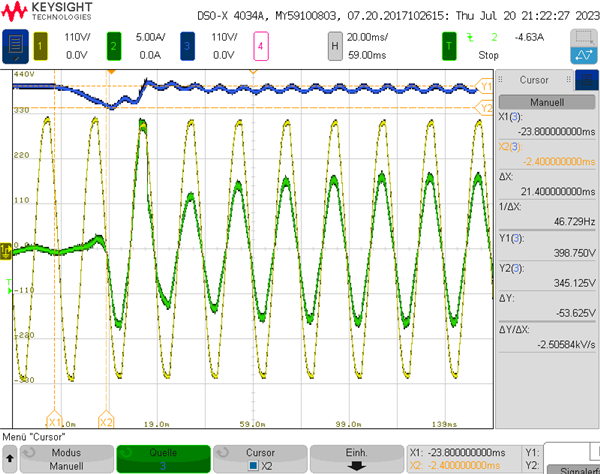Hello,
we are currently using a PFC-Boost-Controller (Continuous Conduction Mode) from a different manufacturer. This PFC is designed for outputs of up to approx. 400W. However, new requirements require sudden load transients of up to 1kW for 200ms. In order to achieve this with the current controller (without the PFC output voltage dropping too much) we have to significantly increase the number of electrolytic capacitors.
For example, at 660uF output capacitor, 230VAC input voltage and a load transient to 1kW, the current topology shows a voltage drop to 345V (from 400V) and a recovery time of approx. 40ms (channel 3 in the figure). The load step in the figure begins at cursor X1 (not shown).
Could you estimate the effect of such a load step with an output capacitance of approx. 660uF, for example with the UCC28180 controller? Are there other components in the portfolio with the same topology (CCM-PFC-Controller, boost diode, external MOSFET, 100kHz and PFC choke) that could perform better than the controller shown in the figure?
If you need further information I will try to provide it.
Thank you and best regards


